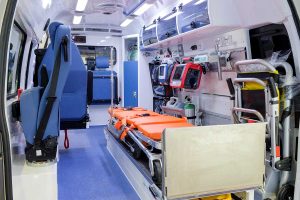Some crucial decisions in treatment of hypothermic patients are closely linked to core body temperature. They concern modification of resuscitation algorithms and choosing the target hospital. Under- as well as over-estimation of a patient’s temperature may limit his chances for survival. Only thermometers designed for core temperature measurement can serve as a guide in such decision making. The aim of the study was to assess whether ambulance teams are equipped properly to measure core temperature.
Authors:
Paweł Podsiadło, Tomasz Darocha, Sylweriusz Kosiński, Tomasz Sanak and Robert Gałązkowski
Methods:
A survey study was conducted in collaboration with the Health Ministry in April 2018. Questionnaires regarding the model, number, and year of production of thermometers were sent to each pre-hospital unit of the National Emergency Medical System in Poland
Results:
A total of 1523 ground ambulances are equipped with 1582 thermometers. 53.57% are infrared-based ear thermometers, 23.02% are infrared-based surface thermometers, and 20.13% are conventional medical
thermometers. Only 3.28% of devices are able to measure core body temperature. Most of analyzed thermometers (91.4%) are not allowed to operate in ambient temperature below 10 °C.
Conclusions: There are only 3.28% of ground ambulances that are able to follow precisely international guidelines regarding a patient’s core body temperature. A light, reliable thermometer designed to measure core temperature in pre-hospital conditions is needed.
Keywords: Core temperature, Thermometer, Diagnose hypothermia, Accidental hypothermia





